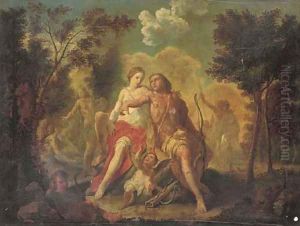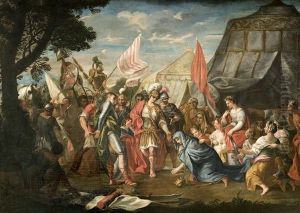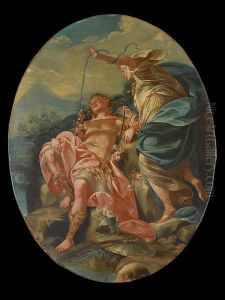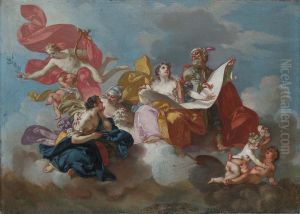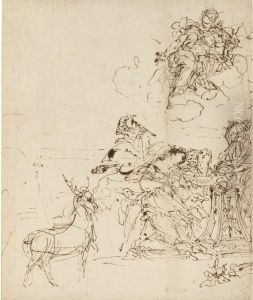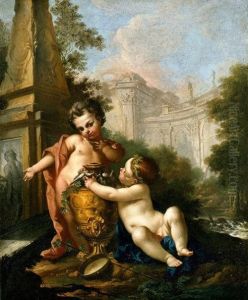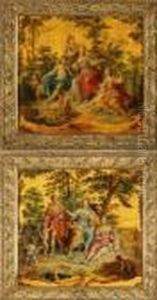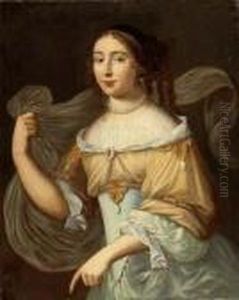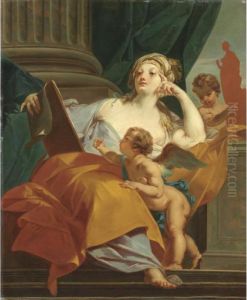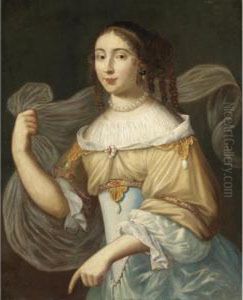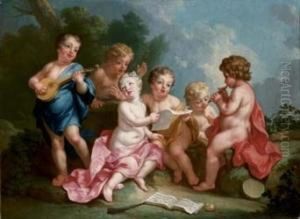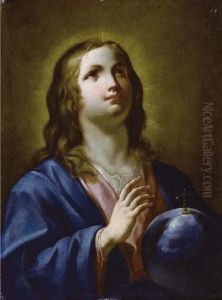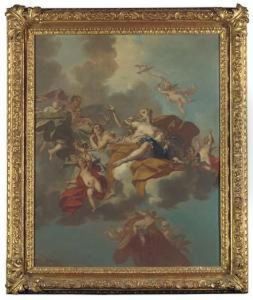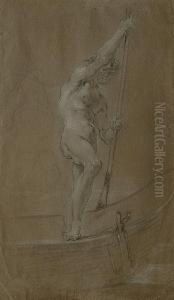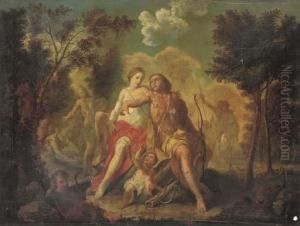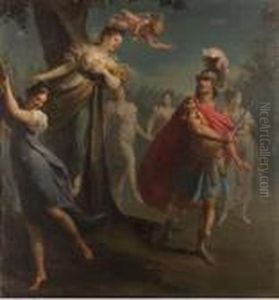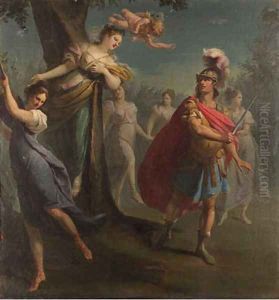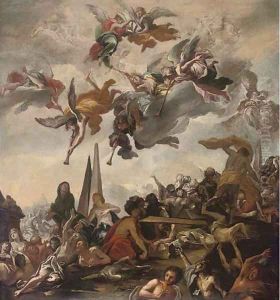Claudio Francesco Beaumont Paintings
Claudio Francesco Beaumont was an Italian painter of the Baroque period, primarily known for his decorative frescoes in grand mannerist and early rococo style. Born in Turin in 1694, Beaumont's artistic talents emerged at a young age, leading him to study under prominent artists of the time, such as Sebastiano Conca in Rome. His early work was influenced by the dramatic lighting and rich colors typical of the Baroque movement.
Beaumont's career was largely associated with the court of Savoy in Turin, where he became the official court painter. He was particularly favored by Charles Emmanuel III of Sardinia, for whom he executed many commissions. Beaumont's frescoes adorn numerous palaces and churches in Turin and its surroundings, including the Palazzo Reale and the Palazzo Madama.
One of Beaumont's most notable works is the series of frescoes in the Palazzo Reale's Galleria Beaumont, named after him. These works exhibit his mastery of grand-scale compositions and are characterized by their dynamic figures and elaborate allegorical themes. His other significant projects include the decoration of the chapel of the Holy Shroud in the Turin Cathedral and the ceiling frescoes in the Santuario di Vicoforte.
Throughout his career, Beaumont demonstrated a consistent ability to adapt his style to the evolving tastes of his patrons, shifting from the high drama of Baroque to the lighter, more playful elements of Rococo. His works are marked by a sense of movement and an adept use of chiaroscuro to create depth.
Claudio Francesco Beaumont's influence extended beyond the borders of Turin, and his style had an impact on the development of late Baroque and Rococo art in Northern Italy. Despite his success and the favor he enjoyed from the court, Beaumont remains less well-known than some of his contemporaries. He died in Turin in 1766, leaving behind a legacy of artistic contributions that continue to be admired for their elegance and vitality.
